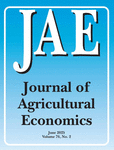Journal list menu
Export Citations
Download PDFs
Editorial
Climate Change and Agriculture: the Role of Socio-economic Research
Changement climatique et agriculture : le rôle de la recherche socio-économique
Klimawandel und Landwirtschaft: Die Rolle sozioökonomischer Forschung
- Page: 3
- First Published: 16 August 2015
Original Articles
A New Global Climate Agreement: Implications for Agriculture?
Un nouvel accord mondial sur le climat : incidences sur l'agriculture ?
Ein neues globales Klimaschutzabkommen: Auswirkungen auf die Landwirtschaft?
- Pages: 4-9
- First Published: 16 August 2015
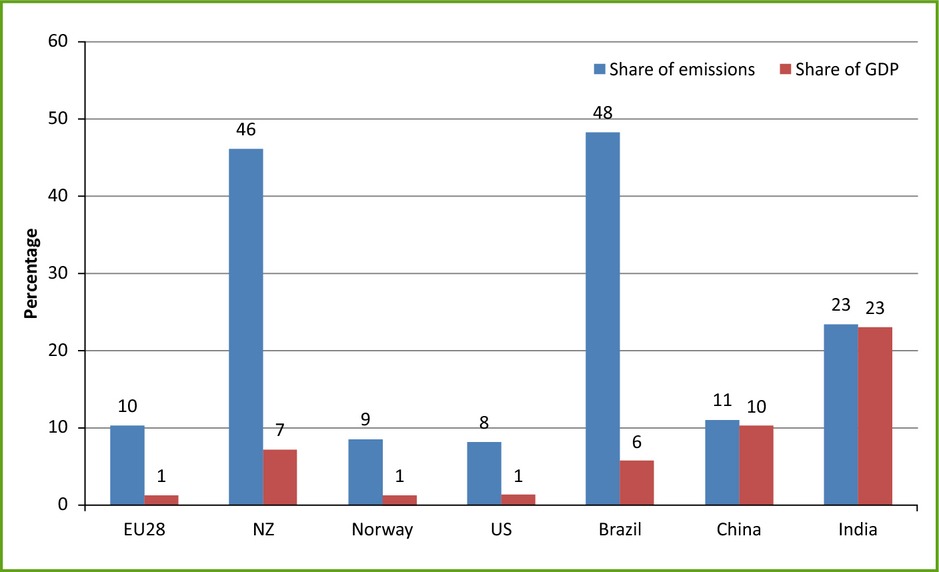
Although agriculture is a relatively emissions-intensive sector in many countries, it is unlikely to be centre stage in upcoming negotiations on a climate change agreement to be held in Paris in December 2015. Nevertheless, the agricultural sector is a major user of energy. It is therefore likely to be affected by higher costs in upstream and downstream industries resulting from domestic policies to reduce greenhouse gas emissions (GHGs). National differences in emissions reduction commitments and their implementation may result in different implicit prices for carbon across countries.
Climate Change, Water and Agriculture: Challenges and Adaptation Strategies
Changement climatique, eau et agriculture : défis et stratégies d'adaptation
Klimawandel, Wasser und Landwirtschaft: Herausforderungen und Anpassungsstrategien
- Pages: 10-15
- First Published: 16 August 2015
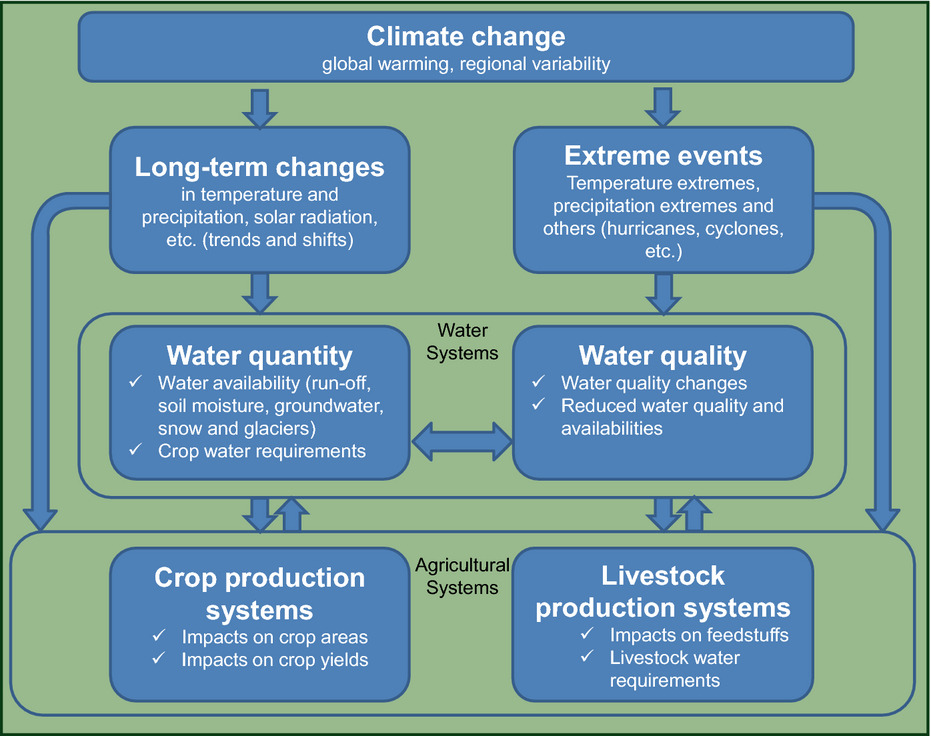
Climate change is expected to have numerous and complex impacts on water resources, with consequences for agricultural production through changes in crop water requirements; the availability and quality of water; and increases in the frequency and severity of extreme weather events such as droughts and floods. Although there is substantial uncertainty about the magnitude of impacts, especially at the local level, this does not call for inaction.
Estimating the Costs and Benefits of Adapting Agriculture to Climate Change
Estimer les coûts et avantages de l'adaptation de l'agriculture au changement climatique
Schätzung der Kosten und Nutzen der Anpassung der Landwirtschaft an den Klimawandel
- Pages: 16-23
- First Published: 16 August 2015
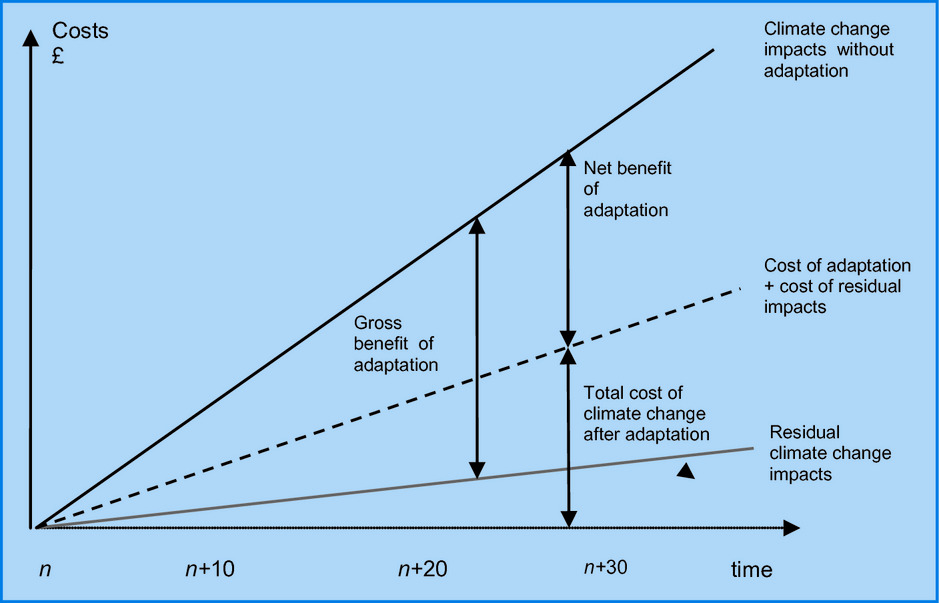
A changing climate will inevitably impact on the natural environment, including agriculture. Anticipatory adaptation is necessary to minimise the negative impacts of climate change, to take advantage of opportunities, and to ensure that food and fibre production is maintained. More detailed information is required as to which adaptation measures will yield relatively greater social rates of return. Such information would help define an efficient adaptation agenda in the agricultural sector. This article identifies key adaptation strategies across England's agricultural sector, and applies cost–benefit analysis to these to determine their net present values, highlighting where the greatest returns can be made, and the role for policy.
Parlons Graphiques
Agriculture, Forestry, Land Use and Greenhouse Gas Emissions
Agriculture, forêts, utilisation du sol et émissions de gaz à effet de serre
Land- und Forstwirtschaft, Landnutzung und Treibhausgasemissionen
- Pages: 24-25
- First Published: 16 August 2015
Original Articles
Better Drip than Flood: Reaping the Benefits of Efficient Irrigation
Mieux vaut du goutte à goutte que des inondations : profiter des avantages d'une irrigation efficace
Berieseln statt überfluten: Der Nutzen effizienter Bewässerung
- Pages: 26-32
- First Published: 16 August 2015

By 2050, the global demand for land and water for agricultural use is projected to increase. Climate change is likely to affect agricultural production through increased temperatures as well as through altered precipitation patterns, which are likely to increase water deficiency in many regions. Measures seeking to increase water efficiency and resilience of the agricultural sector to climate change will therefore be critical. The benefits of more efficient irrigation systems are especially apparent in regions already suffering from water shortages, such as the Mediterranean Basin, or those that are likely to suffer in the future, such as the Southern Cone of South America.
Greenhouse Gas Abatement in Norwegian Agriculture: Costs or Benefits?
La réduction des gaz à effet de serre dans l'agriculture norvégienne : coûts ou avantages?
Senkung der Treibhausgasemissionen in der norwegischen Landwirtschaft: Kosten oder Nutzen?
- Pages: 34-40
- First Published: 16 August 2015

Agriculture, which currently accounts for 0.3 per cent of Norway's gross domestic product, is estimated to generate roughly 13 per cent of the country's emissions of greenhouse gases (GHGs). Norway has proposed a reduction of 40 per cent in its total emissions in the run up to the international climate change conference in Paris in December 2015. High levels of protection mean that Norway is a closed economy as far as agriculture is concerned. Agriculture is also highly subsidised. We estimate a marginal abatement cost curve for agriculture. Since producers, consumers and taxpayers would all be affected if emissions reductions are imposed on agriculture, we calculate abatement costs in terms of national economic welfare. We find that a cut of around 30 per cent in emissions from agriculture can be achieved, without undermining the stated policy objective of ensuring a minimum supply of domestically-produced calories, by taking drained peatland out of production and restoring it to wetland.
Mitigating Climate Change and the Role of Innovation and Productivity: An American Perspective
L'atténuation du changement climatique et le rôle de l'innovation et de la productivité : une perspective américaine
Die Abmilderung des Klimawandels und die Rolle von Innovation und Produktivität aus amerikanischer Sicht
- Pages: 41-47
- First Published: 16 August 2015
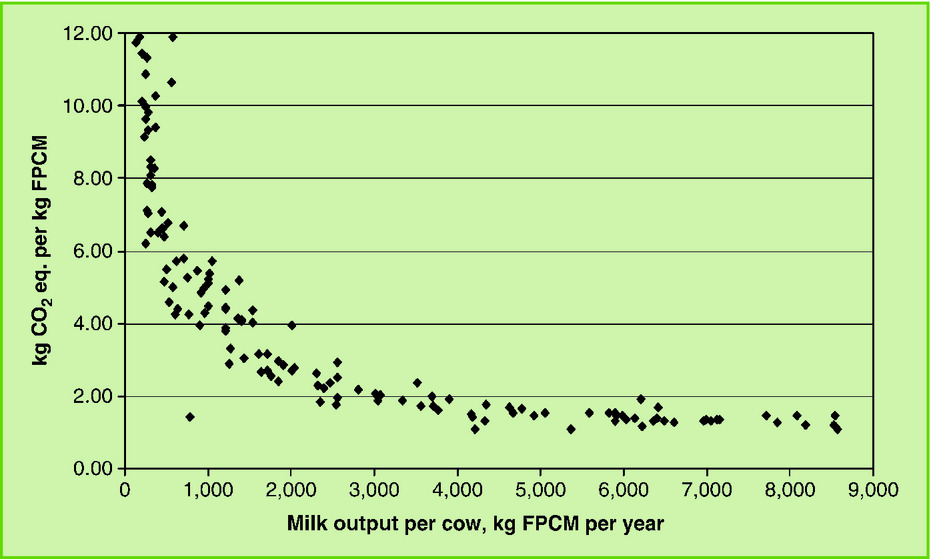
With increasing global demand for animal protein, strategies for mitigating climate change are paramount to policymakers as well as the dairy and livestock industries. This article examines the role of technology and innovation in animal production as a strategy towards climate change mitigation and feeding a growing and wealthier world population. It focuses on the ability to produce more food with fewer resources as a means of reducing the environmental impact of the dairy and livestock industries. Environmental sustainability can be maintained and increased through an agricultural system that is highly productive through efficient use of natural resources. But the key to harnessing the societal and environmental benefits of an efficient and sustainable agri-food sector is addressing political and media impediments, often advanced on the basis of inaccurate information and data.
Point de Vue
What is the Meat and Livestock Industry Doing to Reduce its Impact on Climate Change?
Que fait l'industrie de la viande et de l’élevage pour réduire ses impacts sur le changement climatique ?
Was unternimmt die Vieh- und Fleischwirtschaft, um ihre Auswirkungen auf den Klimawandel zu minimieren?
- Pages: 48-53
- First Published: 16 August 2015

The meat and livestock industry is frequently criticised for its greenhouse gas emissions, directly from livestock production itself and indirectly from animal feed production, part of which is linked to deforestation undertaken to produce livestock feed. One of the most influential critiques was in FAO's Livestock's Long Shadow: Environmental issues and options. FAO has since revised downwards its estimate of livestock's share of GHG emissions from 18 to 14.5% and the organisation now argues that livestock can be part of the solution to climate change. The meat and livestock industry is actively involved in multi-stakeholder actions to design cost effective mitigation strategies tailored to the diversity and complexity of the sector and the broad range of services that livestock provides.




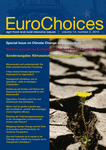

-1641898166.jpg)
